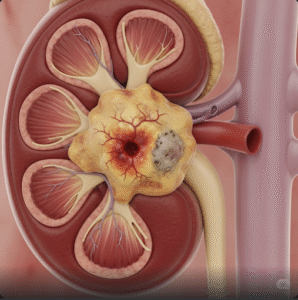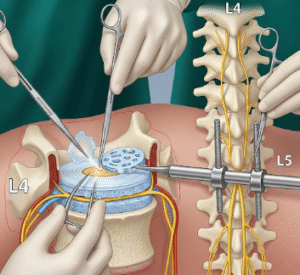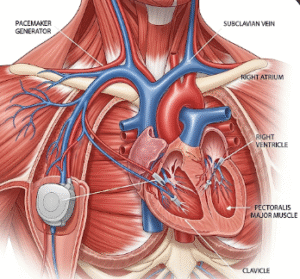Overview
Bleeding between periods, medically known as intermenstrual bleeding, refers to any vaginal bleeding that occurs outside a woman’s regular menstrual cycle. While occasional light spotting is often harmless, persistent or heavy bleeding may indicate hormonal imbalances, infections, or underlying gynecological conditions. In Korea, women’s health clinics and hospitals provide specialized diagnostic evaluations, hormonal assessments, and targeted treatments to identify and manage the causes of intermenstrual bleeding effectively, ensuring reproductive health and overall well-being.
Key Facts
▶ Prevalence: Common among women of reproductive age, particularly during hormonal changes.
▶ Appearance: Light spotting, moderate bleeding, or heavy flow between periods.
▶ Timing: Can occur randomly or consistently between cycles.
▶ Causes: Hormonal fluctuations, contraceptives, infections, polyps, fibroids, or more serious conditions like endometriosis or cancer.
▶ Treatment Options in Korea: Hormonal therapy, medications, minimally invasive procedures, and regular monitoring by gynecologists.
What is Bleeding Between Periods?
Intermenstrual bleeding is any vaginal bleeding occurring outside the normal menstrual cycle. It can range from light spotting to heavier bleeding, and may be accompanied by other symptoms such as pain, cramping, or changes in vaginal discharge.
▶ Spotting: Light, short-duration bleeding, often harmless.
▶ Moderate to Heavy Bleeding: May require medical evaluation to rule out gynecological conditions.
▶ Timing Patterns: Can be random, mid-cycle (often around ovulation), or persistent throughout the cycle.
Note: While occasional bleeding may not be serious, recurrent or heavy intermenstrual bleeding warrants investigation to identify the underlying cause.
What Symptoms Are Related to Bleeding Between Periods?
▶ Light or Heavy Vaginal Bleeding: Occurs outside the expected menstrual period.
▶ Cramping or Abdominal Pain: Mild to moderate discomfort may accompany bleeding.
▶ Changes in Discharge: Unusual color, odor, or consistency may indicate infection.
▶ Mood Changes: Anxiety or stress due to unexpected bleeding.
▶ Fatigue: Resulting from blood loss in cases of heavier intermenstrual bleeding.
▶ Irregular Menstrual Cycles: Periods may become unpredictable or vary in duration.
▶ Spotting After Intercourse: Sometimes associated with cervical issues or infections.
What Causes / Possible Causes
Bleeding between periods can result from various hormonal, structural, infectious, or systemic factors:
▶ Hormonal Imbalances: Fluctuations in estrogen and progesterone during the menstrual cycle.
▶ Ovulation Spotting: Light mid-cycle bleeding in some women during ovulation.
▶ Birth Control or Hormonal Therapy: Pills, implants, injections, or IUDs may cause breakthrough bleeding.
▶ Uterine Polyps or Fibroids: Benign growths that can lead to irregular bleeding.
▶ Endometriosis: Tissue growth outside the uterus causing bleeding and pain.
▶ Infections: Vaginal or cervical infections, including STIs.
▶ Perimenopause: Hormonal changes leading to irregular cycles and spotting.
▶ Cancer: Rarely, cervical, uterine, or vaginal cancers may cause intermenstrual bleeding.
Note: Age, medical history, medications, and menstrual patterns help determine the cause and necessary evaluation.
When Should I See a Doctor?
▶ Persistent Bleeding: Bleeding lasting more than a few days or recurring each cycle.
▶ Heavy Flow: Interfering with daily activities or causing anemia.
▶ Pain or Cramping: Severe discomfort alongside bleeding.
▶ Unusual Discharge or Odor: Suggesting infection.
▶ Post-Intercourse Bleeding: May indicate cervical or vaginal issues.
▶ Older Age: Women over 40 should seek evaluation for abnormal bleeding.
▶ Associated Symptoms: Fatigue, dizziness, or unexplained weight loss.
Tip: Early evaluation by a gynecologist ensures correct diagnosis and prevents complications such as anemia, reproductive issues, or undetected gynecological conditions.
Care and Treatment
Management depends on the underlying cause, severity, and frequency of bleeding:
▶ Observation: Occasional, light spotting may not require treatment.
▶ Hormonal Therapy: Birth control pills or hormone regulation to stabilize cycles.
▶ Medications: Anti-inflammatory drugs or antibiotics for infections or inflammation.
▶ Surgical Interventions: Removal of polyps, fibroids, or abnormal tissue if necessary.
▶ Lifestyle Adjustments: Stress reduction, regular exercise, and balanced nutrition to support hormonal health.
▶ Monitoring: Keeping a menstrual diary to track timing, flow, and associated symptoms.
Treatment Options in Korea
Medical Evaluation:
▶ Gynecology Consultation: Comprehensive examination including pelvic exams and medical history review.
▶ Laboratory Tests: Hormonal panels, infection screening, and STI testing.
▶ Imaging: Ultrasound, MRI, or hysteroscopy to assess uterine and cervical structures.
Advanced Treatments:
▶ Minimally Invasive Procedures: Polyp removal, fibroid management, or endometrial ablation.
▶ Targeted Medications: Hormonal therapy tailored to regulate cycles and reduce intermenstrual bleeding.
▶ Infection Management: Antibiotics or antiviral therapy if infections are detected.
Rehabilitation & Support:
▶ Patient Education: Guidance on menstrual tracking, medication adherence, and symptom monitoring.
▶ Psychological Support: Counseling for stress or anxiety related to irregular bleeding.
▶ Specialist Clinics: Korean women’s health centers provide integrated care for evaluation, treatment, and follow-up.
Outcome: With proper diagnosis and treatment in Korea, most cases of bleeding between periods are effectively managed, allowing women to maintain reproductive health, reduce anxiety, and experience regular, predictable menstrual cycles.













